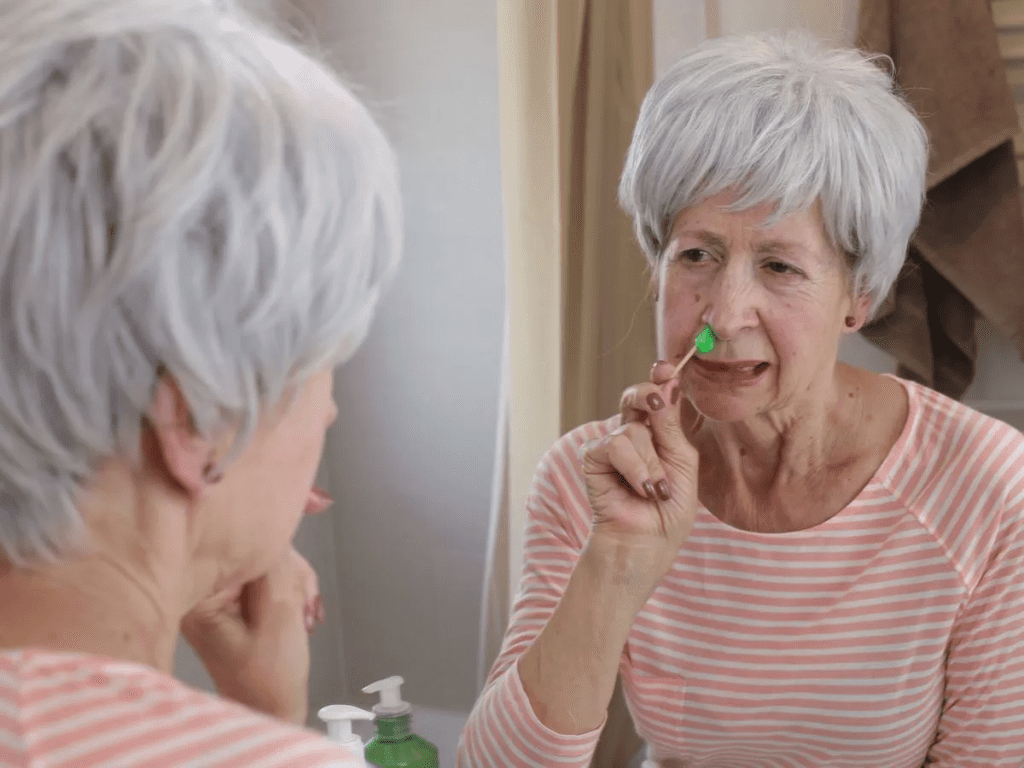Nose hair may not be glamorous, but it serves a critical function. While today’s grooming methods like plucking and waxing can seem attractive for getting rid of unwanted nose hairs, experts caution that these practices may pose significant health risks. This article delves into why nose hair should be left undisturbed and the dangers you might face if you remove it improperly.
Why Nose Hair Is Important: Not Just an Irritation
Nose hair might seem unattractive, but it plays a key role in keeping you healthy. These tiny hairs are part of your body’s natural defense system, catching dust, allergens, and particles before they reach your lungs. Dr. Michael Jacobs, a board-certified dermatologist, notes, “Nose hairs act as the first line of defense against pollutants and foreign bodies that could otherwise enter your respiratory system.”
By trapping these particles, nose hair helps prevent respiratory problems and stops harmful bacteria from penetrating deeper into your body. So, while they may not look great, nose hairs are vital for your health.
The Risks of Plucking or Waxing Nose Hair
Despite their importance, many people pluck or wax their nose hair for aesthetic reasons. Medical professionals warn that these practices can result in alarming consequences. Dr. Don J. Beasley, a board-certified otolaryngologist, states that the nose is a sensitive area with many blood vessels and mucous membranes, making it prone to infection when hair follicles are forcibly removed.
Plucking or waxing can create small wounds inside your nostrils, providing entry points for bacteria. One common infection is folliculitis, where the hair follicles become inflamed, leading to painful red bumps or pimples. While it may seem minor, untreated folliculitis can spread, causing crusty sores and even permanent scarring in severe cases.
Nasal Cellulitis: A More Serious Complication
In some cases, the risks are more than just minor irritation. Removing nose hair can lead to a severe bacterial infection called nasal cellulitis. This infection occurs when bacteria penetrate the deeper layers of skin in the nose, causing redness, swelling, and pain. If untreated, nasal cellulitis can spread to other areas, including the sinuses and, in extreme cases, even the brain.
Dr. Beasley warns, “The nasal passages are delicate, and infections here can spread quickly due to the high concentration of blood vessels.” This makes the risks of plucking or waxing nose hairs far more significant than most people realize.
Breaching the Body’s Defenses: How Waxing Weakens Your Immune Response
While waxing offers a longer-lasting result than trimming, it also poses risks. Waxing can create small openings in the skin, making it easier for bacteria to invade. Dr. Nicole Aaronson, an otolaryngologist, explains that although waxing doesn’t weaken the immune system directly, it creates entry points for bacteria, increasing the likelihood of infection. If the wax is too hot, it can burn the sensitive lining of the nose, causing small lesions and exposing the tissue to infection.
For those considering waxing, the risks often outweigh the benefits. Besides the potential for infection, waxing can cause temporary pain, redness, and irritation.
The Role of Nose Hair in Air Moisture and Comfort
Nose hair does more than trap dust and bacteria. It also helps maintain moisture in the air you breathe. When you exhale, nose hair traps some of the moisture from your breath, preventing your nasal passages from becoming too dry. This humidified air makes your respiratory system more comfortable and helps prevent nasal irritation.
Without nose hair, the air you breathe can feel harsh and dry, especially in low humidity environments. Removing too much nose hair can lead to discomfort and dryness in the nasal passages, making it harder for your body to maintain optimal respiratory function.
Safe Alternatives: Managing Nose Hair
If nose hairs are a cosmetic concern, there are safe ways to handle them without risky removal techniques. For visible hairs outside your nostrils, carefully trim them using a clean pair of eyebrow scissors with rounded tips to avoid injury. Be sure to sanitize any tools to avoid introducing bacteria into the delicate nasal tissue.
For hair deeper inside the nostrils, an electric nose hair trimmer is a safer choice. These devices cut the hair to a manageable length without removing it entirely, allowing nose hair to maintain its essential functions while reducing its visibility.

Conclusion: The Vital Role of Nose Hair
Nose hair may not be attractive, but it’s crucial for your health. Plucking or waxing for a quick fix comes with significant risks, such as infections like folliculitis and nasal cellulitis. Moreover, removing too much nose hair can cause dryness and discomfort in your nasal passages.
If the appearance of your nose hairs bothers you, trimming is a much safer and healthier alternative. By leaving the deeper hairs intact, you allow your nose to keep filtering out harmful particles and maintain the moisture balance your respiratory system needs. So before you reach for the tweezers or wax, consider the risks and choose a safer method instead.
Protect your nose, protect your health!


